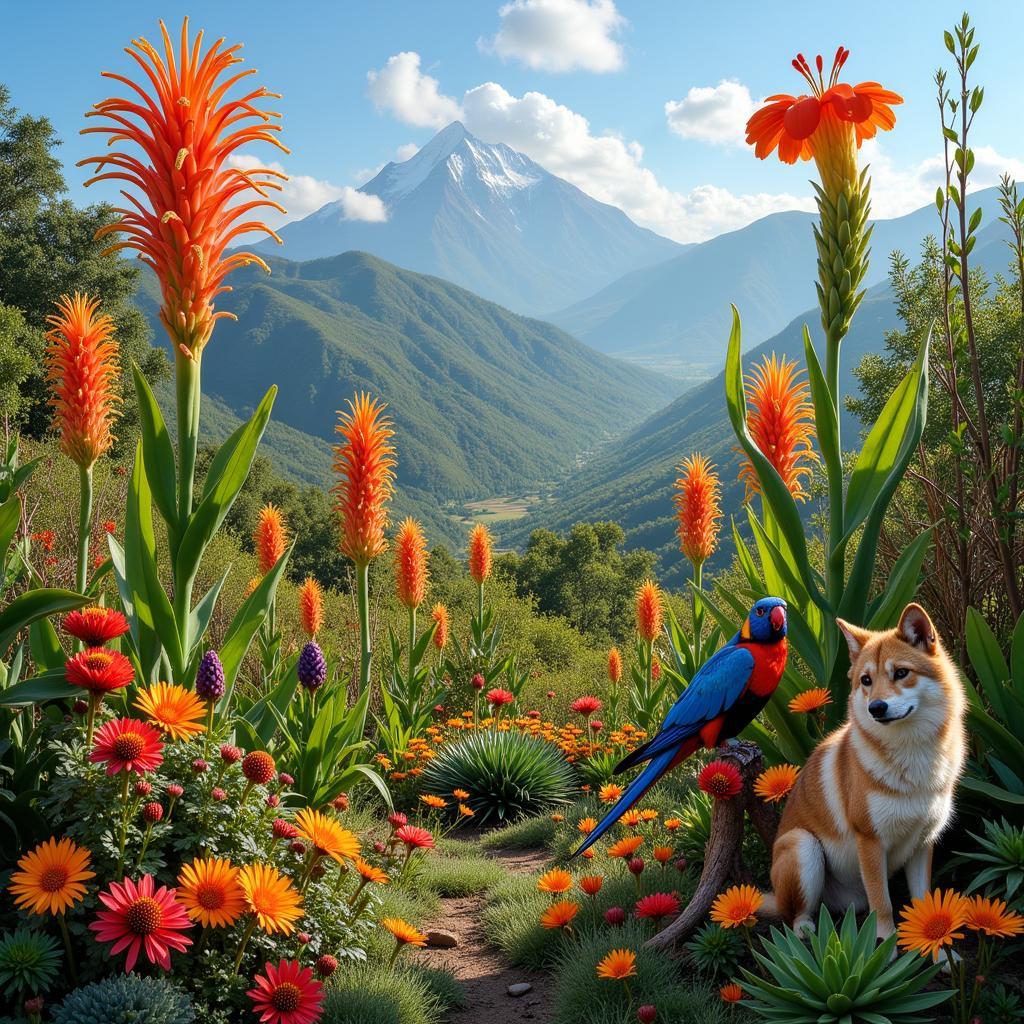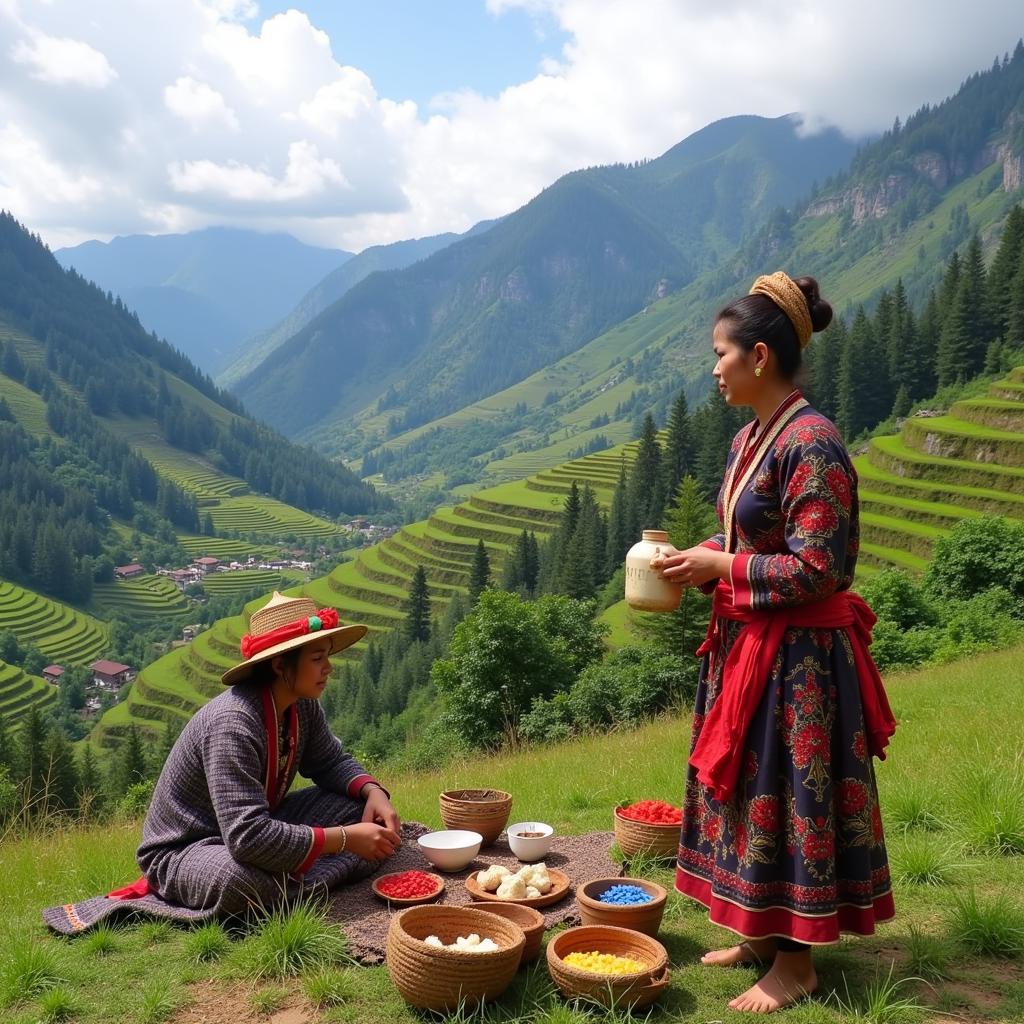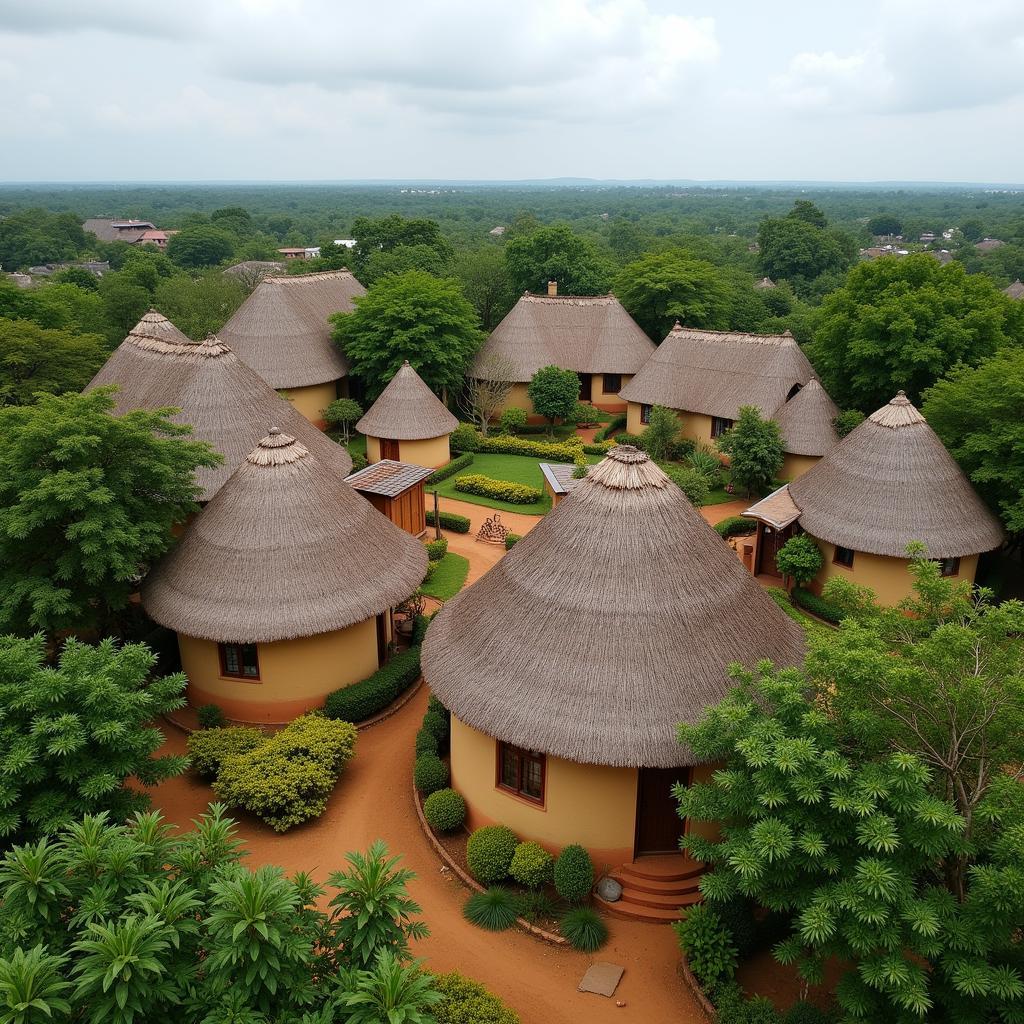Exploring the Majestic African Highlands
The African Highlands, a tapestry of breathtaking landscapes and diverse cultures, offer a unique perspective on the continent’s beauty and complexity. From the snow-capped peaks of Kilimanjaro to the rolling hills of Ethiopia, these elevated regions boast a rich biodiversity, vibrant traditions, and a history as captivating as the views themselves.
Exploring the African highlands unveils a world beyond the familiar savannas. These elevated terrains hold a unique allure, shaped by distinct climates, geological formations, and the communities that call them home. Let’s delve into the remarkable world of these sky-high landscapes.
A Journey Through Diverse Highland Ecosystems
The African highlands encompass a wide array of ecosystems, each with its own unique flora and fauna. The varying altitudes create distinct climate zones, ranging from lush montane forests to alpine meadows. This diversity fosters a remarkable concentration of endemic species found nowhere else on Earth. For example, the Ethiopian highlands are known for their unique species of wolves and baboons, while the Virunga Mountains are home to the endangered mountain gorilla. These fragile ecosystems highlight the importance of conservation efforts in preserving the biodiversity of the African highlands.
Did you know the Ethiopian highlands are sometimes referred to as the “Roof of Africa”?
The unique geography of the African highlands has led to the evolution of specialized plant and animal life, creating biodiversity hotspots. From the iconic giant lobelias of Mount Kenya to the elusive Ethiopian wolf, the highlands offer a glimpse into a world of fascinating adaptations. Many of these species are threatened by habitat loss and climate change, underscoring the critical need for conservation initiatives. Take for instance, the impact of changing weather patterns on the delicate afroalpine moorlands. These high-altitude wetlands, crucial for water catchment, are facing increasing pressure from human activity and environmental shifts. This has dire implications for both the unique biodiversity they support and the downstream communities relying on these water sources. Learn more about the specific challenges faced by African cities beginning with i.
 Ethiopian Highlands Unique Flora and Fauna
Ethiopian Highlands Unique Flora and Fauna
Cultural Riches of the Highlands
The African highlands are not just about stunning landscapes; they are also home to a rich tapestry of human cultures. Many highland communities maintain ancient traditions and ways of life, often deeply connected to the natural environment. The terraced farming practices of the Ethiopian highlands, for example, are a testament to centuries of agricultural innovation and sustainable land management. These techniques not only provide sustenance but also shape the very landscape, creating stunning visual patterns etched into the hillsides. From unique musical styles to intricate crafts, the cultural heritage of the highlands provides a fascinating window into the diverse tapestry of human experience.
What role do cattle play in the cultural and economic lives of some highland communities? You can learn more about African cattle.
For centuries, these elevated landscapes have served as both refuge and inspiration for diverse ethnic groups. The highlands have witnessed the rise and fall of kingdoms, the development of unique agricultural practices, and the preservation of ancient spiritual beliefs. This rich history is woven into the fabric of highland communities, expressed through storytelling, music, and traditional ceremonies. The unique challenges posed by the environment have fostered resilience and ingenuity, reflected in the diverse cultural expressions found across the African highlands. For instance, many communities have developed intricate irrigation systems and terraced farming methods to cultivate crops on steep slopes.
 African Highland Communities Cultural Practices
African Highland Communities Cultural Practices
Exploring the African Highlands: A Call to Adventure
The African highlands offer a truly unique travel experience. Whether you’re seeking adventure, cultural immersion, or simply a chance to connect with nature, the highlands have something to offer. Trekking through the misty forests of the Rwenzori Mountains, encountering mountain gorillas in the Virungas, or exploring the ancient rock-hewn churches of Ethiopia are just a few of the unforgettable experiences that await.
What are some of the logistical considerations for planning a trip to the African highlands?
Planning a trip to the African highlands requires careful consideration. Altitude sickness can be a concern, so it’s essential to acclimatize properly. Additionally, researching local customs and traditions is crucial for respectful and meaningful interactions with highland communities. The rewards, however, are immense. The breathtaking scenery, coupled with the opportunity to experience unique cultures, makes a journey to the African highlands a truly transformative experience. Find out more about African hills and other fascinating destinations.
 Trekking in the African Highlands
Trekking in the African Highlands
Conclusion
The African highlands offer a compelling blend of natural beauty, cultural richness, and historical significance. From the snow-capped peaks to the vibrant communities that call these elevated regions home, the African highlands offer a unique and unforgettable experience. Whether you’re an adventurer, a nature lover, or a culture enthusiast, the African highlands are waiting to be explored. You can also learn more about the 16 West African countries.
FAQ
-
What is the highest point in the African highlands?
Mount Kilimanjaro in Tanzania. -
What are some of the major mountain ranges in the African highlands?
The Atlas Mountains, the Drakensberg Mountains, the Rwenzori Mountains, and the Ethiopian Highlands. -
What are some of the unique animals found in the African highlands?
Mountain gorillas, Ethiopian wolves, giant forest hogs, and various species of birds. -
What are some of the major crops grown in the African highlands?
Coffee, tea, barley, wheat, and various fruits and vegetables. -
What are some of the challenges faced by the African highlands?
Deforestation, soil erosion, climate change, and population pressure. -
Are there guided tours available for exploring the African highlands?
Yes, many tour operators offer guided treks, cultural tours, and other experiences. -
What is the best time to visit the African highlands?
The best time to visit varies depending on the specific location and the activities you plan to do.
Scenarios and Questions
Scenario 1: A traveler wants to visit the gorillas in the Virunga Mountains.
Question: What permits and vaccinations are required?
Scenario 2: A researcher is interested in studying the biodiversity of the Ethiopian highlands.
Question: What research facilities and resources are available?
Scenario 3: A photographer wants to capture the stunning landscapes of the Drakensberg Mountains.
Question: What are the best viewpoints and hiking trails?
Further Exploration
You might be interested in learning more about the African countries alphabetical order capitals.
Contact Us
For further assistance, please contact us at:
Phone: +255768904061
Email: kaka.mag@gmail.com
Address: Mbarali DC Mawindi, Kangaga, Tanzania.
We have a 24/7 customer support team.


